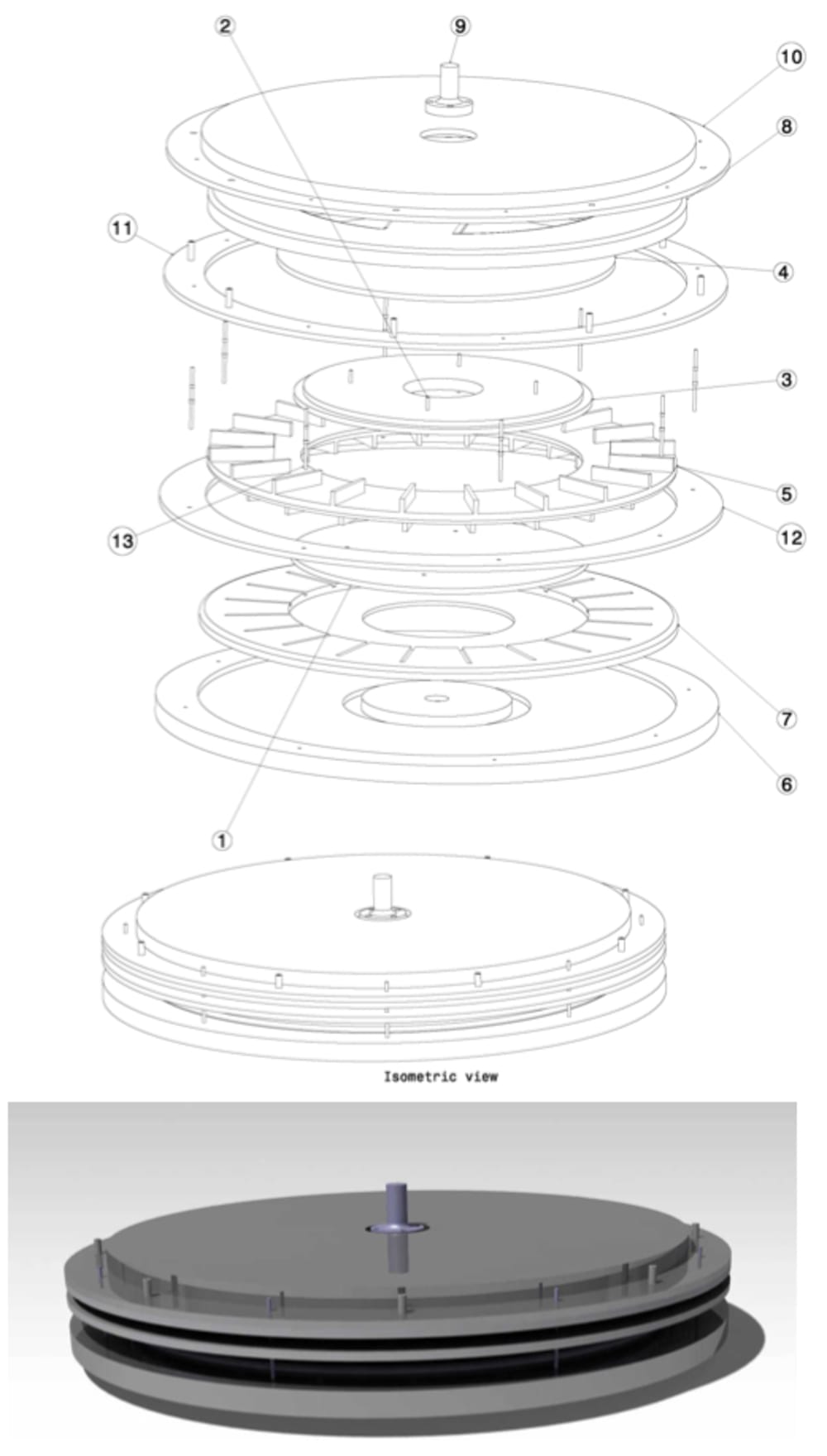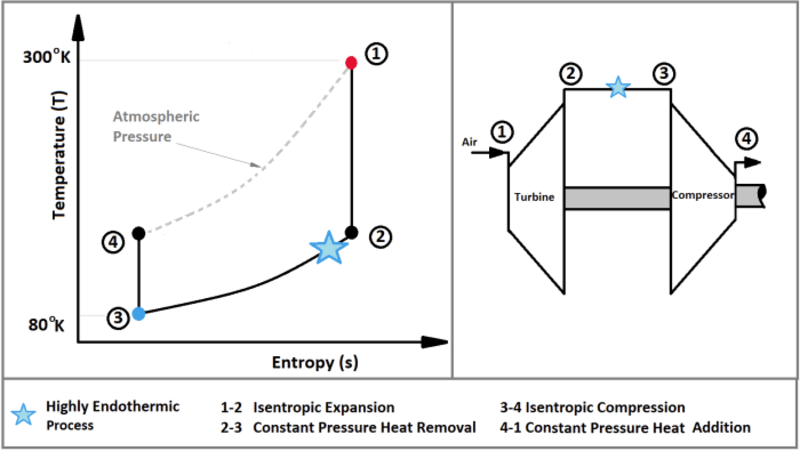This gas turbine engine design offers an ingenious solution to the pending energy crisis. It offers an alternative energy solution that emits no greenhouse gas, while balancing the greenhouse effect itself, as the by-product of this engine is very cold air.
The concept is a gas turbine engine that is fueled by air. The system produces energy by allowing the ambient surrounding to do work on it, as oppose to the contrary, as in conventional gas turbine engines. Hence the idealised thermodynamic cycle of the concept is the mirror of the conventional Gas Turbine Cycle (figure 1).
The first phase of the design is the analysis of the concept thermodynamic cycle (derivative of figure 1).
Assumptions:
1. Turbine and compressor isentropic efficiencies = 80%
2. Overall Pressure Ratio = 4
3. Atmospheric Pressure and Temperature = 100 KPa, 300K
4. Minimum Temperature = 80K
5. Air Properties: Cp = 1004.5 J/KgK R = 287 J/KgK
6. A heat regeneration (300oK) cycle is used
The analysis showed a potential to produce a specific power output of at least 37.5 KW per Kg air.
The second stage was to develop a process that would be sufficiently endothermic to attain the necessary low temperatures at the required flow rates (process 2-3 in figure 1). The solution adapted to this challenge is a warm core system, resembling the air flow of a contained scaled down version of a Tropical Cyclone (figure 2). In part this approach is influenced by works of Kerry A. Emmanuel, which suggest that the Tropical Cyclone can be modelled as an engine cycle. CFD models were developed in ComSol that illustrate the endothermic process. This process is triggered by initially cooling the output end of the flow to a critically low temperature. At the onset of the process external cooling is no longer required. To the output flow the core acts as a refrigeration agent; removing heat from the output end and transferring it towards the input end of the flow (reverse direction, see figures 2). This action causes a heat build-up and temperature rise in the core that balances the drop in temperature at the output end.
The third stage in the design process was to create a full 3D CFD Gas Turbine model that incorporates both the turbo-machinery components and the endothermic process, at rated operating conditions. The starting sequence is similar to a conventional gas turbine engine; the compressor is initially powered by an external energy source to create mass flow through the system, while simultaneously the endothermic process is initiated. Power output is governed by increasing and decreasing mass flow and vorticity which controls the endothermic process.
Presently a prototype is being manufactured to conduct proof of concept tests. As in the manufacturing of a conventional gas turbine, the concept is to be manufactured using standard workshop procedures and materials. As a consequence it is expected that the gas turbine would cost about the same as a conventional gas turbine of similar power output.
Like this entry?
-
About the Entrant
- Name:John Rawlins
- Type of entry:individual
- Software used for this entry:ComSol 3.5, Catia V5
- Patent status:none








